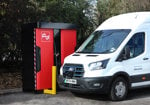Some costs resulting from an accident are simple to assess, such as the price of repairing a vehicle.
However, others – like the lost working time that the driver clocks up as a result of the accident, total legal fees accumulated and the impact on insurance premiums – are generally much more difficult to quantify.
As a result, only that minority of fleets with an overriding interest in safety have gone to the trouble of working out an accurate figure.
However, increased duty of care responsibilities mean that managers are finally gaining a better understanding of the whole issue. They have to look much more closely at how and why accidents are occurring and, as a welcome bonus, are learning more about the actual costs.
Just a couple of years ago, we estimate that fewer than 10% of cfc’s 3,000 or so fleet software customers analysed their accident data in any meaningful way. Now, the figure is nearer one-third.
Fleet managers who are collecting data for duty of care purposes are rapidly learning to analyse it comprehensively, often with the help of fleet software.
Used correctly, the technology provides a toolkit that allows them to see which drivers and which vehicles are involved in which kind of accidents, as well as where and when they are happening.
For most, this is a much more complete picture of their accidents than they have ever seen before and it has thrown up statistics which many have found surprising. For example, a common finding is that the highest costs are often incurred by unexpected sources.
Previously, it appears, most fleet managers were of the opinion that the biggest proportion of their accident costs came from infrequent but serious accidents that resulted in identifiable major bills, such as a car being written off and a driver absent from work for a long period as a result.
However, this is very often not the case. A driver who has four or five scrapes in car parks and at-fault minor impacts over a number of months – the sort of accidents that almost pass under the fleet manager’s radar – can often quickly accumulate a total level of cost that is much higher.
While from a duty of care point of view these minor incidents have not resulted in serious injury, they do indicate strongly that action needs to be taken in order to reduce costs.
This is an area where many fleet managers are also learning new skills. In the past, disincentives geared towards preventing accidents have been fairly limited, such as recharging the insurance excess to the driver.
However, detailed accident analysis is indicating that this type of catch-all measure may be not be the best course of action. For example, our example driver who has multiple accidents in car parks may simply be very poor at reversing, so fitting a reversing sensor to their car may solve the problem.
In many organisations, it has taken the legal penalties that ignoring duty of care may bring in order for fleet managers to start taking accidents seriously – but the discoveries that they are making about the real costs of accidents along the way are adding impetus to tackling the issue.
As a result of both these factors, we may see a real reduction in fleet accident rates in the coming years.















Login to comment
Comments
No comments have been made yet.